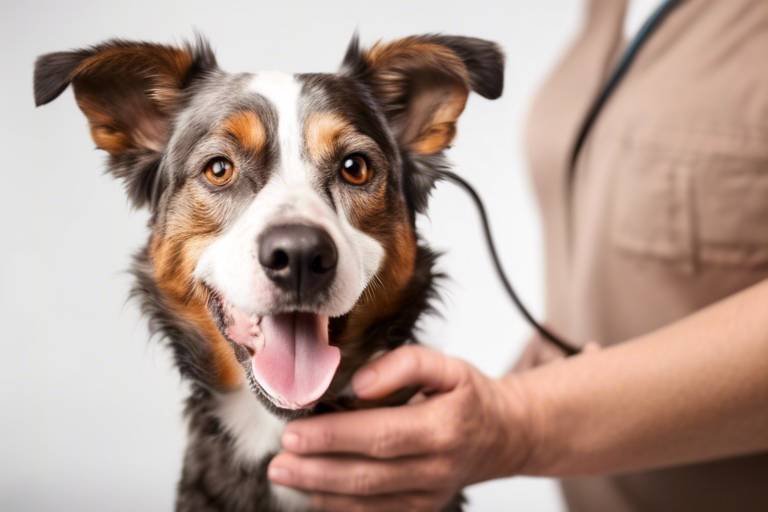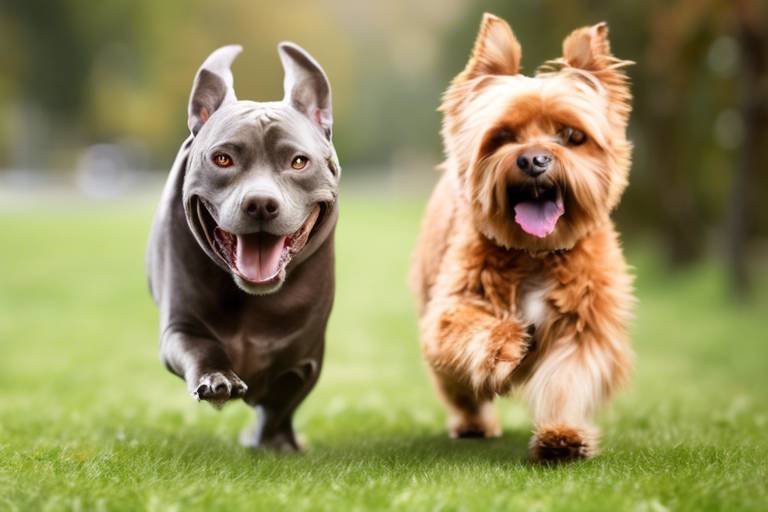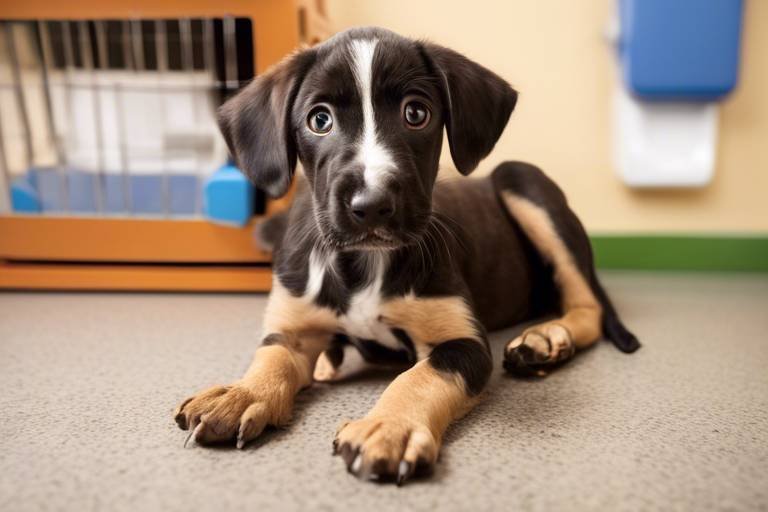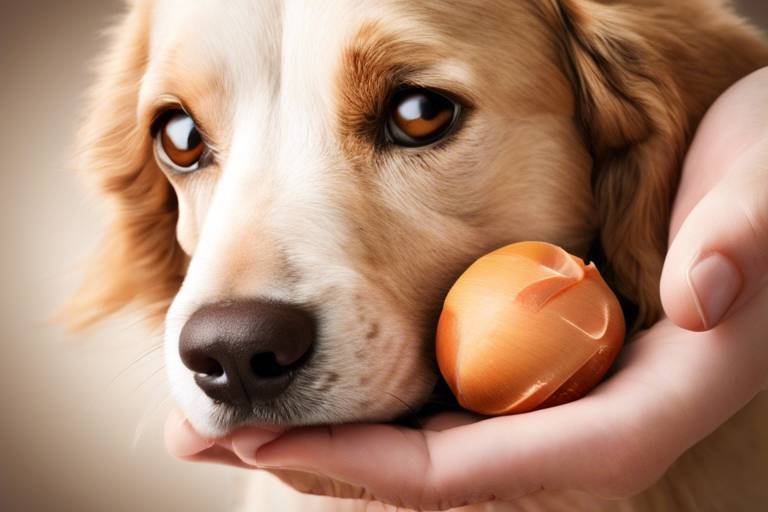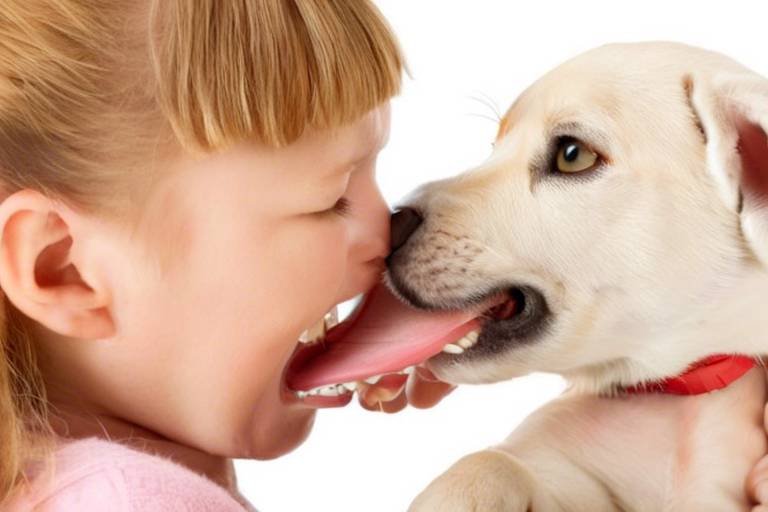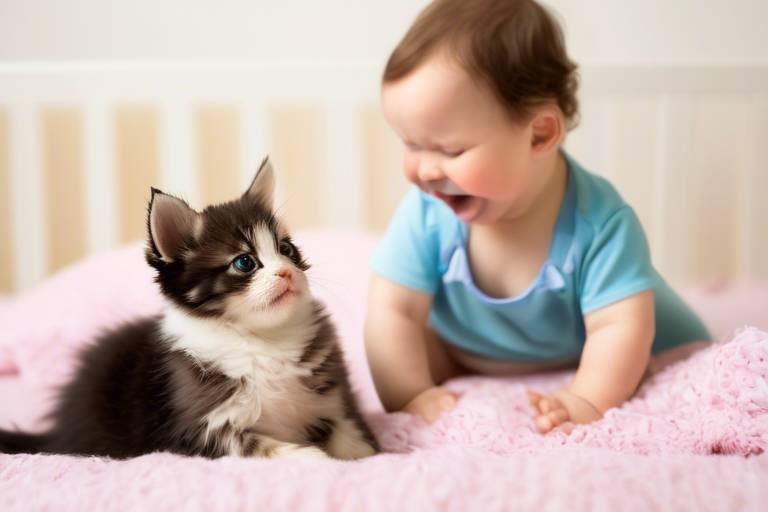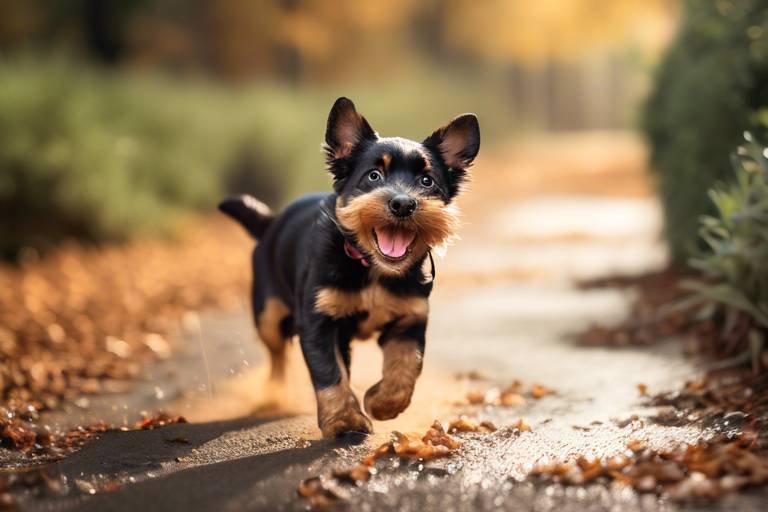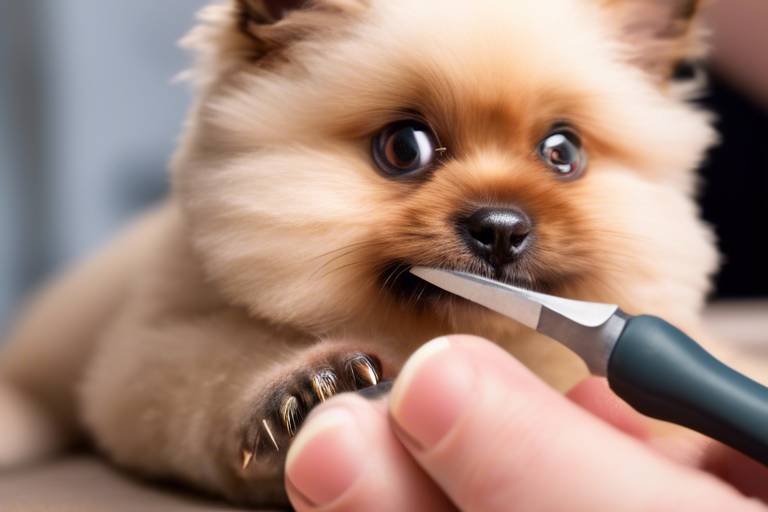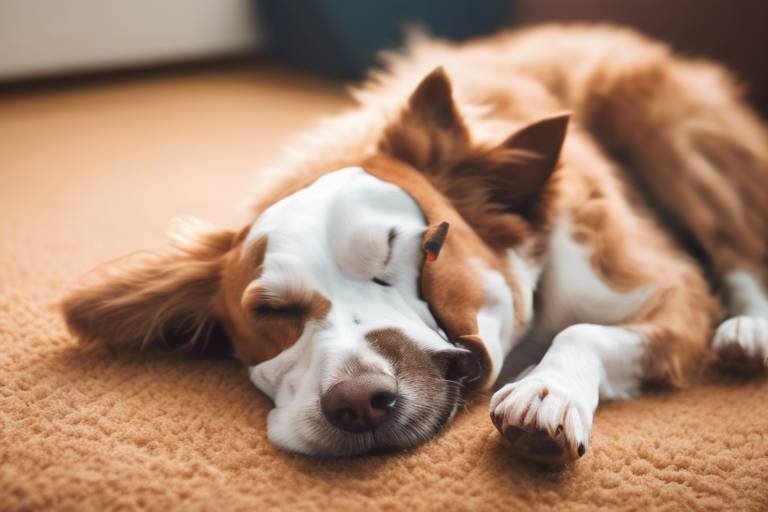How to Keep Your Pet Safe from Common Poisons
As a pet owner, there's nothing more important than ensuring the safety and well-being of your furry companions. Pets are naturally curious creatures, often exploring their environment with an inquisitive nose and a playful attitude. Unfortunately, this curiosity can sometimes lead them into dangerous situations, especially when it comes to common household poisons. In this article, we’ll dive deep into essential strategies that can help you protect your beloved pets from everyday toxins and poisons. By understanding the threats and implementing practical tips, you can create a safer home for your pets. Let's get started!
First things first, awareness is key. Many household items that we use daily can pose a serious threat to our pets. For instance, did you know that chocolate, while a delightful treat for humans, can be lethal to dogs? Similarly, certain plants like lilies and azaleas can cause severe reactions in cats. It's not just food and plants; common household chemicals, such as cleaning supplies and antifreeze, can also be extremely toxic. Here’s a quick rundown of some common pet poisons:
- Foods: Chocolate, grapes, onions, and garlic.
- Plants: Lilies, azaleas, and poinsettias.
- Chemicals: Cleaning agents, antifreeze, and pest control products.
Understanding these dangers is the first step toward prevention. Always keep a watchful eye on what your pet is sniffing around or trying to nibble on!
Recognizing the symptoms of poisoning in pets is crucial. The sooner you identify a problem, the quicker you can respond. Common signs include vomiting, diarrhea, lethargy, and unusual behavior. If your pet is drooling excessively, has difficulty breathing, or appears to be in pain, these could be red flags. Remember, pets can’t communicate their discomfort in words, so it's essential to be observant. If you notice any of these symptoms, don't hesitate to take action.
If you suspect your pet has ingested something harmful, knowing what to do immediately is vital. The first step is to remain calm. Panicking will only make the situation worse. Try to identify what your pet has eaten and how much. If you can, take a sample of the substance or packaging to show your vet. Next, call your veterinarian or a pet poison control center for guidance. They can provide you with the best course of action based on the specific situation.
When reaching out to a pet poison control center, be prepared to provide detailed information about your pet, including its size, age, and any known medical conditions. The experts on the line can offer tailored advice and may instruct you on whether to induce vomiting or take your pet to the vet immediately. Having this information handy can save precious time in an emergency.
Understanding when to take your pet to the vet can save lives. If your pet shows severe symptoms or if the substance ingested is known to be toxic, it’s critical to seek veterinary care right away. Additionally, if you’re uncertain about the severity of the situation, it’s always better to err on the side of caution. Your vet can perform the necessary tests and treatments to ensure your pet’s safety.
Prevention is key in keeping your pets safe from poisons. Start by conducting a thorough inspection of your home. Identify potential hazards and take proactive steps to minimize risks. For example, you can store hazardous substances in high cabinets or locked areas, out of reach of curious paws. It’s also a good idea to educate your family members about the dangers of certain substances and the importance of keeping them out of your pet's reach.
Proper storage of hazardous materials is essential for pet safety. Here are some tips on how to organize and secure potentially dangerous items in your home:
- Store cleaning supplies in high cabinets.
- Use child-proof locks for cabinets containing chemicals.
- Keep medications in a secure location away from pets.
By following these simple guidelines, you can significantly reduce the risk of accidental poisoning.
Ensuring that everyone in your household understands the dangers of certain substances can protect your pets. It’s important to have open discussions about pet safety and the potential risks of everyday items. Make sure your kids know not to leave food lying around and to keep doors closed where cleaning supplies are stored. Education is a powerful tool in preventing accidents.
Transforming your home into a pet-friendly space can significantly reduce the risk of poisoning. Consider the following suggestions:
- Designate a safe play area for your pets.
- Use pet-friendly plants and decor.
- Regularly clean up any spills or dropped food.
By making these adjustments, you can create a safer environment for your furry friends.
Q: What should I do if I think my pet has been poisoned?
A: Remain calm, identify the substance, and contact a veterinarian or pet poison control center immediately.
Q: How can I prevent my pet from getting poisoned?
A: Store hazardous items securely, educate family members, and create a pet-friendly environment.
Q: Are there specific plants that are safe for pets?
A: Yes, some pet-friendly plants include spider plants, Boston ferns, and bamboo palms.
Q: What are the symptoms of poisoning in pets?
A: Common symptoms include vomiting, diarrhea, lethargy, and unusual behavior. If you notice these signs, seek veterinary help.

Understanding Common Pet Poisons
As pet owners, it's our responsibility to ensure the safety and well-being of our furry companions. Unfortunately, many common household items can pose serious threats to pets. Understanding these potential poisons is the first step in keeping your pet safe. Did you know that some foods we enjoy every day can be toxic to our pets? For instance, chocolate, grapes, and onions are just a few examples of human foods that can lead to severe health issues if ingested by our beloved animals.
In addition to food, certain plants and chemicals found around the house can also be dangerous. Many common houseplants, like lilies and philodendrons, are highly toxic to cats and dogs. Even seemingly harmless items, such as cleaning products and medications, can become lethal if ingested. For example, antifreeze, which is often used in vehicles, has a sweet taste that can attract pets, leading to accidental poisoning.
To help you navigate this potentially hazardous landscape, here’s a brief overview of some of the most common pet poisons:
| Type of Poison | Examples | Symptoms of Poisoning |
|---|---|---|
| Food | Chocolate, Grapes, Onions | Vomiting, Diarrhea, Lethargy |
| Plants | Lilies, Azaleas, Sago Palm | Drooling, Abdominal Pain, Difficulty Breathing |
| Chemicals | Antifreeze, Cleaning Products, Pesticides | Seizures, Tremors, Coma |
It's essential to remain vigilant and informed about the dangers lurking in our homes. Always read labels and be cautious when introducing new items into your household. If you suspect that your pet has ingested something harmful, don’t hesitate to seek help immediately. Remember, knowledge is power, and being proactive can significantly reduce the risk of accidental poisoning.
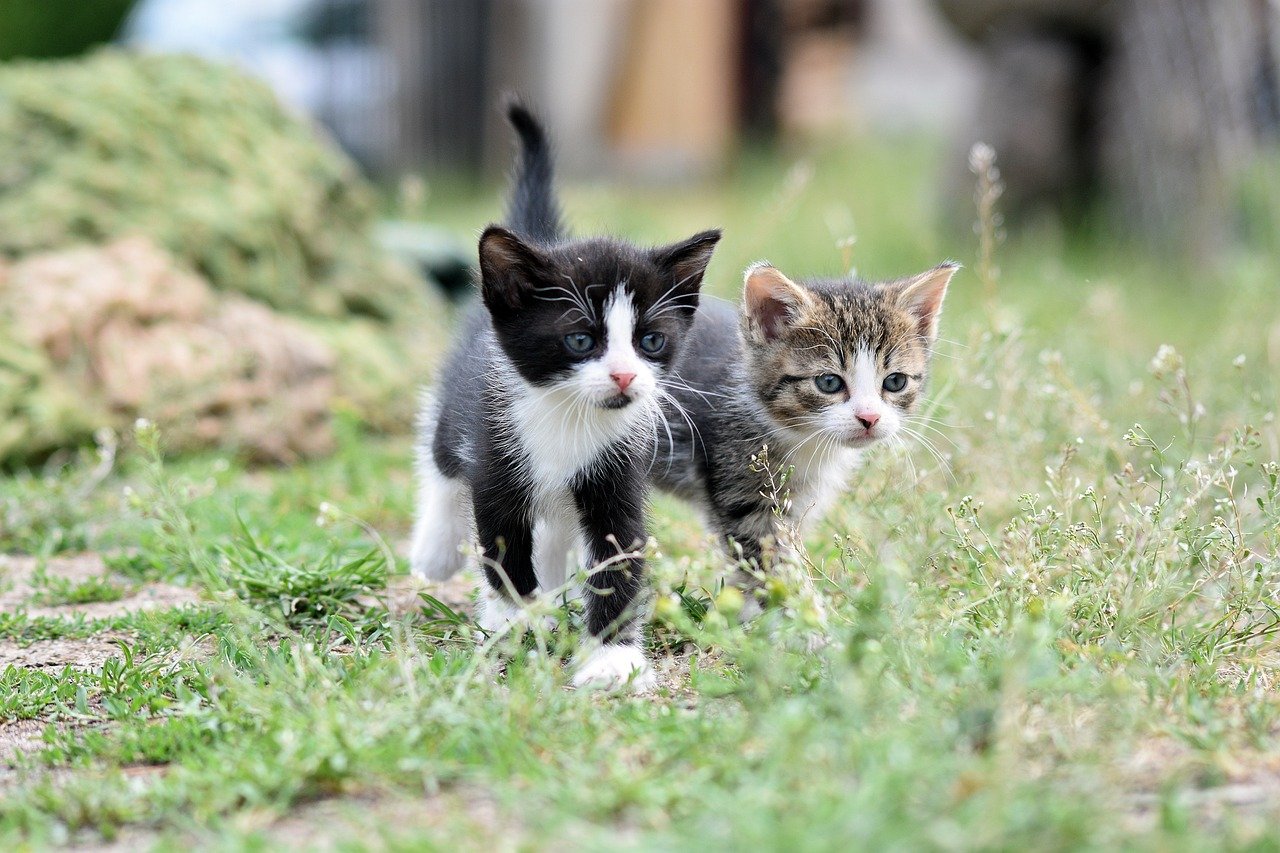
Signs of Poisoning in Pets
As a loving pet owner, it's crucial to be aware of the signs of poisoning in your furry friends. Pets, especially curious ones, often explore their environment with their mouths, making them susceptible to ingesting harmful substances. Recognizing the symptoms early can be the difference between a quick recovery and a tragic outcome. So, what should you look out for? Let's dive into some key indicators that your pet might be in trouble.
First and foremost, vomiting is one of the most common signs of poisoning. If your pet suddenly starts retching or brings up their food, it could be a signal that something is amiss. Alongside vomiting, diarrhea might also occur, often leading to dehydration if not addressed promptly. Keep an eye on your pet's litter box or take note of their bathroom habits during walks.
Another critical sign is lethargy. If your usually playful pup or energetic cat suddenly seems tired, disinterested in their favorite toys, or is sleeping more than usual, it may indicate that they are feeling unwell. This can be coupled with loss of appetite, where your pet refuses to eat their meals or shows no interest in treats. A drastic change in eating habits is always a red flag.
Additionally, excessive drooling or foaming at the mouth can suggest that your pet has ingested something toxic. This can be especially alarming if accompanied by tremors or seizures, which are serious symptoms that require immediate veterinary attention. If you notice your pet shaking or having convulsions, don’t hesitate to seek help.
Behavioral changes can also signal poisoning. If your pet is unusually aggressive, restless, or seems disoriented, these could be signs of distress. It's essential to observe their interactions with you and their environment closely. In some cases, pets may even exhibit difficulty breathing or show signs of abdominal pain, such as whining when you touch their belly.
In summary, being vigilant about your pet's behavior and physical signs can help you identify poisoning early. Here’s a quick recap of the signs to watch for:
- Vomiting
- Diarrhea
- Lethargy
- Loss of appetite
- Excessive drooling
- Tremors or seizures
- Behavioral changes
- Difficulty breathing
- Abdominal pain
Remember, if you suspect your pet has ingested a toxic substance, acting quickly is vital. The sooner you recognize these signs, the faster you can get the help they need. Keeping your eyes peeled for changes in your pet's behavior can save their life.
Q: What should I do if I suspect my pet has been poisoned?
A: If you suspect poisoning, remain calm and contact your veterinarian or a pet poison control center immediately. Try to provide them with information about what your pet may have ingested.
Q: Are certain breeds more susceptible to poisoning?
A: While any pet can be at risk, some breeds may have genetic predispositions to certain toxins. Always consult with your vet for breed-specific advice.
Q: Can I induce vomiting at home?
A: Inducing vomiting should only be done under the guidance of a veterinarian or poison control expert. Incorrect methods can cause more harm than good.
Q: How can I prevent my pet from ingesting harmful substances?
A: Keep hazardous items out of reach, educate your family about pet safety, and create a pet-friendly environment to minimize risks.
Immediate Actions to Take
If you suspect that your beloved pet has ingested something harmful, the first thing you should do is stay calm. Panic can cloud your judgment, and your furry friend needs you to think clearly. Start by assessing the situation: What did your pet eat? How much of it did they consume? Knowing these details can significantly help veterinary professionals determine the best course of action. Remember, time is of the essence, so act swiftly!
Here are some immediate actions you can take:
- Remove Access: If your pet is still near the source of the poison, gently but quickly remove them from the area to prevent further ingestion.
- Check for Symptoms: Look for any signs of distress such as vomiting, diarrhea, lethargy, or unusual behavior. This information will be crucial for your vet.
- Do Not Induce Vomiting: Unless specifically directed by a veterinarian or poison control expert, do not attempt to induce vomiting. Some substances can cause more harm if they come back up.
- Gather Information: Collect any packaging or labels of the ingested substance. This can provide vital information to the vet or poison control center.
Once you have taken these steps, it's essential to contact a veterinarian or a pet poison control center immediately. They can provide tailored advice based on the specific situation. If you choose to call a poison control center, be prepared to provide the following information:
| Information Needed | Details |
|---|---|
| Pet's Species | Dog, cat, etc. |
| Age and Weight | How old is your pet and how much do they weigh? |
| Substance Ingested | Name and amount of the poison. |
| Symptoms Observed | Any signs of distress or illness? |
After you contact a professional, they might instruct you to take your pet to the vet immediately. Understanding when to seek veterinary care can be a lifesaver. If your pet is exhibiting severe symptoms such as difficulty breathing, seizures, or loss of consciousness, don’t hesitate—take them to the vet right away.
In summary, being prepared and knowing the immediate actions to take can make a significant difference in your pet's well-being. Always keep emergency numbers handy and consider having a pet first-aid kit ready in your home. Remember, your furry friend depends on you to keep them safe!
Contacting a Poison Control Center
When you suspect that your beloved pet has ingested something toxic, the first step is to stay calm and gather as much information as possible about the situation. This is where a pet poison control center becomes your best ally. These specialized services are designed to provide immediate advice and support, helping you navigate the stressful waters of a potential poisoning incident. But how do you effectively reach out to them?
First and foremost, keep the number of your local pet poison control center handy. You never know when an emergency might strike, and having this information readily available can save precious time. When you call, be prepared to provide essential details about your pet, including:
- Your pet's species, breed, age, and weight.
- A description of the substance your pet may have ingested, including the amount and time of ingestion.
- Your pet's current symptoms, if any.
Providing this information allows the poison control experts to assess the situation accurately and give you tailored advice. They might suggest monitoring your pet at home, inducing vomiting, or even bringing your pet in for immediate medical attention. Remember, these professionals are trained to handle such emergencies; they can provide guidance that could potentially save your pet's life.
In addition to immediate advice, many poison control centers also offer follow-up support to ensure your pet is recovering properly. They can guide you on what to watch for in the coming days, helping you feel more secure as you care for your furry friend. It's important to note that while some centers charge a consultation fee, the peace of mind they provide is often worth every penny. Always check if your local veterinarian has a recommendation for a trusted poison control center.
In summary, knowing how to contact a pet poison control center and what information to provide can make a significant difference in an emergency. This proactive approach not only aids in the immediate care of your pet but also empowers you as a responsible pet owner. Remember, your quick action can be the key to your pet’s recovery!
Here are some common questions pet owners have regarding contacting a poison control center:
- What information should I have ready when I call? Always have your pet's details, the substance involved, and any symptoms observed.
- Are there any costs associated with calling a poison control center? Some centers may charge a fee for their services, so it's good to inquire beforehand.
- Can I rely solely on the advice from a poison control center? While they provide valuable guidance, always follow up with your veterinarian for a thorough examination.
When to Visit the Veterinarian
Knowing when to take your furry friend to the veterinarian can be a daunting task, especially when you're faced with the uncertainty of potential poisoning. It's crucial to act swiftly and decisively, as some substances can cause serious harm in a matter of hours. If you suspect your pet has ingested something toxic, consider the following indicators that warrant an immediate trip to the vet:
- Severe Symptoms: If your pet is exhibiting severe symptoms such as difficulty breathing, seizures, or unresponsiveness, these are red flags that require urgent medical attention.
- Vomiting or Diarrhea: While not all vomiting or diarrhea is cause for alarm, if these symptoms are persistent or accompanied by blood, it’s time to consult your vet.
- Known Toxin Exposure: If you know your pet has ingested a known toxic substance, such as chocolate, grapes, or certain plants, don’t wait for symptoms to appear. Contact your veterinarian immediately.
- Behavioral Changes: Sudden lethargy, disorientation, or changes in appetite can indicate that something is wrong. If your pet seems unusually quiet or withdrawn, it’s best to seek veterinary advice.
In addition to these symptoms, it's essential to have the packaging or a sample of the ingested substance on hand when you visit the vet. This information can help the veterinarian assess the situation more accurately and provide the best possible care for your pet. Remember, it's always better to err on the side of caution. If you're ever in doubt, don’t hesitate to reach out to your vet or a pet poison control center for guidance.
Ultimately, being proactive about your pet's health can make all the difference. Regular check-ups and staying informed about common household poisons can equip you with the knowledge needed to react quickly in an emergency. Your pet relies on you to keep them safe, so take that responsibility seriously!
Here are some common questions pet owners have regarding pet poisoning and when to seek veterinary help:
- What should I do if I see my pet eat something toxic? - Immediately call your veterinarian or a pet poison control hotline for instructions.
- Are all plants toxic to pets? - No, but many common houseplants can be harmful. It's vital to research which plants are safe for your pets.
- How can I prevent my pet from getting poisoned? - Keep hazardous substances out of reach, educate your family, and create a safe environment for your pets.
Preventative Measures for Pet Owners
As a pet owner, your furry friend’s safety is a top priority. Taking preventative measures can significantly reduce the risk of poisoning and keep your pets healthy and happy. One of the first steps is to be aware of the common household items that can pose a threat. For instance, foods like chocolate, grapes, and onions are not just tasty treats for humans; they can be harmful or even fatal to pets. Similarly, certain plants, such as lilies and azaleas, are beautiful but can cause serious health issues for curious pets. Understanding these risks is essential.
Another important strategy is to secure hazardous substances in your home. This includes cleaning supplies, medications, and even some types of essential oils. Store these items in high cabinets or locked drawers to ensure that your pets can't access them. It's not just about keeping these items out of reach; it's also about being mindful of where you place them after use. For example, never leave a bottle of cleaning solution on a low countertop or a pill bottle on a table. A moment of inattention can lead to a disaster.
Moreover, creating a pet-friendly environment goes beyond just securing hazardous materials. Consider pet-proofing your home by removing or relocating items that could be harmful. For instance, if you have houseplants, research which ones are safe for pets and replace any toxic varieties. Additionally, be cautious with decorations and holiday items, as some can pose choking hazards or contain harmful substances. Your home should be a sanctuary for your pet, free from potential dangers.
Education is also a vital component in preventing poisoning. Make sure that everyone in your household, including children, understands the dangers of specific substances. Teach them not to feed pets human food without permission and to be careful about leaving items around that could be harmful. The more informed your family is, the safer your pets will be.
Lastly, consider keeping a list of emergency contacts readily available. This list should include your veterinarian’s phone number, the nearest emergency animal clinic, and a pet poison control hotline. In case of an emergency, having this information at your fingertips can save precious time. You can even create a small poster and hang it on your fridge or keep it in your wallet.
By implementing these preventative measures, you’ll not only protect your pets from potential poisons but also create a safer living environment for them. Remember, a little bit of awareness and preparation can go a long way in ensuring the well-being of your beloved companions.
- What should I do if my pet ingests something toxic?
Immediately contact your veterinarian or a pet poison control center for guidance on the next steps.
- How can I tell if my pet has been poisoned?
Look for symptoms such as vomiting, diarrhea, lethargy, or seizures. If you notice any of these signs, seek veterinary help.
- Are there specific plants I should avoid having in my home?
Yes, plants like lilies, azaleas, and sago palms are known to be toxic to pets. Always research before bringing new plants into your home.
- Can I use essential oils around my pets?
Some essential oils can be harmful to pets. Always consult with your veterinarian before using them in your home.
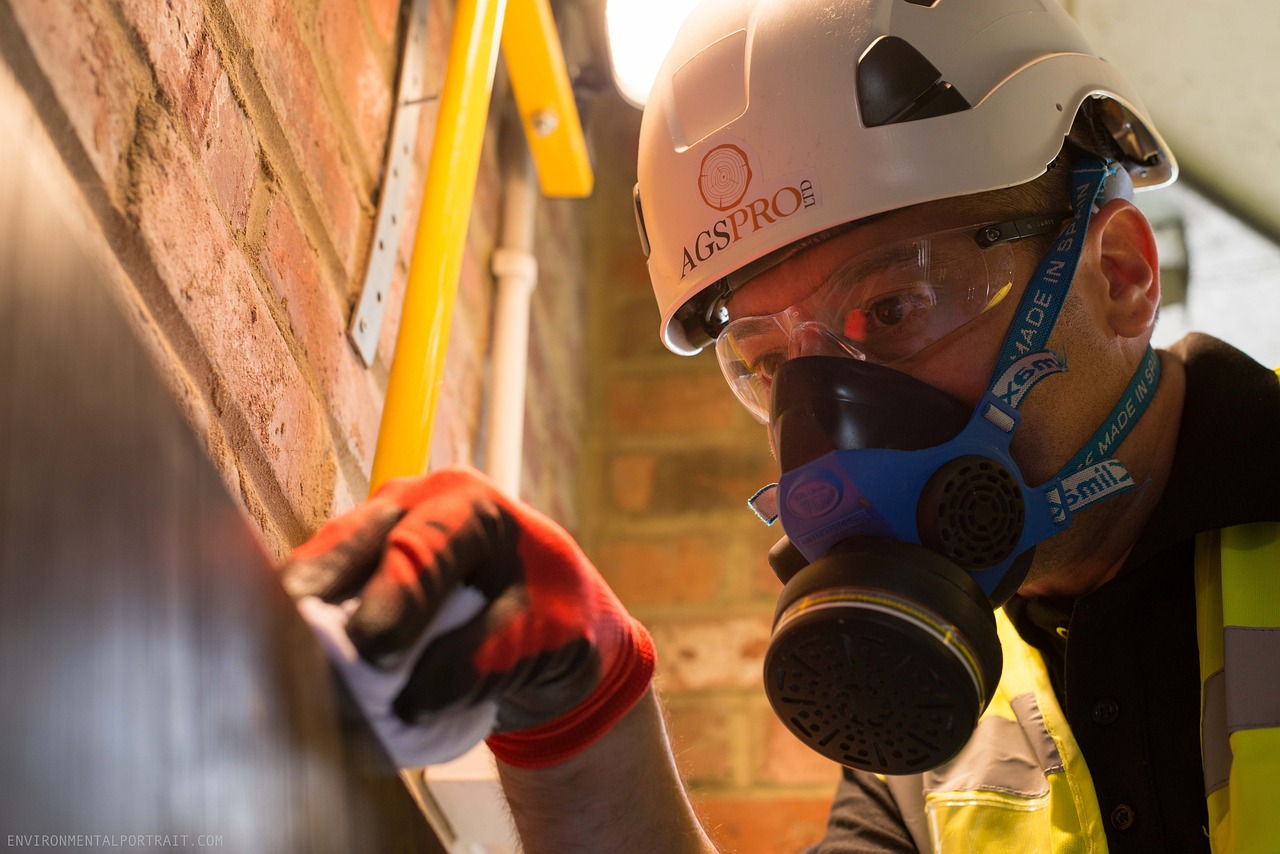
Safe Storage of Hazardous Substances
When it comes to keeping your beloved pets safe, one of the most critical steps is ensuring that hazardous substances are stored properly. Many pet owners may not realize just how many common household items can pose a serious risk to their furry friends. From cleaning supplies to medications, the items we use daily can be harmful if ingested. To create a pet-safe environment, it’s essential to think like a detective, uncovering potential dangers that may be lurking around your home.
First and foremost, always store hazardous substances out of reach of your pets. This means placing items like cleaning products, paints, and chemicals in cabinets that are high up or secured with child-proof locks. Think of it as creating a fortress against potential poisons. You wouldn’t leave a tempting treat out for a curious child, so why do it for your pet? Additionally, consider using storage bins with tight-fitting lids for items like gardening supplies or automotive fluids. This extra layer of protection can prevent accidental spills or curious noses from getting into trouble.
It’s also important to be mindful of the containers that hazardous substances come in. Many pet owners might think that a closed bottle is safe, but pets can be surprisingly resourceful. For instance, if you have a bottle of pills, make sure it’s not only closed but also stored in a place where your pet can’t knock it over or access it. You might even want to label these containers clearly and keep them in a designated area that’s off-limits to your pets. A simple label can be a reminder for you and a warning for anyone else in the household.
Another aspect of safe storage is being aware of the expiration dates on products. Old medications or cleaning supplies can degrade over time, potentially becoming more harmful. Regularly check your supplies and dispose of any expired items properly. Not only does this keep your storage areas tidy, but it also reduces the risk of accidental poisoning. Remember, a cluttered space can lead to overlooked dangers!
Here’s a quick table summarizing some common hazardous substances and their safe storage recommendations:
| Hazardous Substance | Safe Storage Recommendations |
|---|---|
| Cleaning Products | Store in high cabinets with child-proof locks. |
| Medications | Keep in a locked cabinet away from pets. |
| Gardening Supplies | Use sealed bins and store in a shed or garage. |
| Automotive Fluids | Store in original containers and out of reach. |
Creating a pet-friendly environment doesn’t stop at storage. It’s about fostering a culture of safety within your household. Talk to your family members about the importance of keeping these substances away from pets. Make it a habit to remind everyone to put things back in their designated places after use. The more vigilant everyone is, the safer your pets will be.
In summary, safe storage of hazardous substances is a proactive approach to pet safety. By being mindful of where and how you store these items, you can significantly reduce the risk of accidental poisoning. Remember, a little effort today can save your pet from a lot of potential harm tomorrow!
- What should I do if my pet ingests a hazardous substance?
Contact your veterinarian or a pet poison control center immediately for guidance. - Are there specific cleaning products that are safer for pets?
Yes, look for pet-safe cleaning products that are free from harmful chemicals. - How can I educate my children about pet safety?
Teach them to always ask before giving your pet food or treats and to keep hazardous items out of reach.
Educating Family Members
When it comes to keeping our furry friends safe, education is one of the most powerful tools we have. It's not just about knowing what substances are toxic; it's about ensuring that every member of your household is on the same page. Imagine a scenario where your child innocently leaves a chocolate bar within reach of your dog. If no one understands that chocolate is a poison for pets, the consequences could be dire. Therefore, having open discussions about pet safety is crucial.
Start by holding a family meeting where everyone can share their thoughts and ask questions about pet safety. Use this time to explain the common household items that can be harmful to pets, such as certain foods, plants, and cleaning supplies. You might even create a visual aid, like a chart or a poster, that lists these items and their dangers. This way, everyone can refer to it easily whenever needed.
Additionally, consider implementing a simple rule: “If you’re unsure, ask!” Encourage family members to consult with one another before giving your pet any food or allowing them to access areas where harmful substances might be stored. This small step can make a significant difference in preventing accidental poisoning.
To further enhance understanding, you can organize educational activities, such as:
- Creating a pet safety quiz to test knowledge.
- Watching videos that demonstrate the dangers of certain substances.
- Reading books or articles together about pet care.
Remember, education is an ongoing process. Regularly revisit these topics, especially when new family members join the household or when your pet's behavior changes. The more informed everyone is, the better equipped they'll be to protect your beloved pet from potential dangers.
Lastly, don't forget to lead by example. Show your family how to safely store hazardous items and keep a watchful eye on your pet. By modeling good practices, you'll instill a culture of safety that will benefit both your family and your furry companions.
Q: What are some common household items that are toxic to pets?
A: Some common household items that can be toxic to pets include chocolate, grapes, onions, garlic, certain plants like lilies, and various cleaning products. Always check labels and do thorough research before introducing any new item into your home.
Q: How can I tell if my pet has been poisoned?
A: Look for signs such as vomiting, diarrhea, lethargy, seizures, or unusual behavior. If you notice any of these symptoms, it's essential to act quickly.
Q: What should I do if I suspect my pet has ingested something toxic?
A: First, stay calm. Gather information about what your pet may have ingested, and contact your veterinarian or a pet poison control center immediately for guidance.
Q: Are there any safe plants I can have in my home?
A: Yes! Some pet-safe plants include spider plants, Boston ferns, and bamboo palms. Always research before bringing new plants into your home.
Q: How can I make my home more pet-friendly?
A: You can make your home more pet-friendly by securing hazardous materials, keeping harmful foods out of reach, and creating designated pet areas that are safe and comfortable.
Creating a Pet-Friendly Environment
When it comes to keeping our furry companions safe, creating a pet-friendly environment is an absolute must. Imagine your home as a haven, a cozy retreat where your pets can roam freely without the constant worry of encountering hazardous substances. It's like setting up a protective bubble around them, ensuring their safety while allowing them to explore their surroundings. So, how do we achieve this? Let’s dive into some practical strategies!
First and foremost, you need to identify potential hazards in your home. This includes everything from toxic plants to household cleaners. Did you know that many common houseplants, like lilies and philodendrons, can be harmful to pets? It’s crucial to research which plants are safe and which are not. Consider replacing toxic plants with pet-friendly alternatives, such as spider plants or Boston ferns. Not only will this keep your pets safe, but it will also enhance your home’s aesthetic!
Next, let’s talk about storage solutions. Keeping hazardous materials out of reach is vital. This means securing cleaning supplies, medications, and anything that could be harmful in cabinets or high shelves. A great tip is to use child-proof locks on cabinets that contain dangerous items. Think of it as setting up a fortress where your pets can’t accidentally breach the walls and get into trouble. Additionally, consider using labeled containers for pet food and treats to avoid any mix-ups that could lead to accidental ingestion of harmful substances.
Another essential aspect of creating a pet-friendly environment is to designate play areas. This not only gives your pets a space to enjoy but also helps keep them away from areas where they might find trouble. Whether it’s a cozy corner with their favorite toys or a spacious yard for running around, having a dedicated space can make a world of difference. You could even include some engaging elements like scratching posts or climbing structures to keep them entertained and mentally stimulated.
Moreover, educating your family members about pet safety is crucial. Everyone in the household should be aware of the potential dangers and how to mitigate them. Regular family discussions about pet care can reinforce safe practices, making it a team effort to protect your furry friends. Remember, it’s not just about keeping hazardous items away; it’s about fostering a culture of safety and awareness within your home.
Lastly, consider the importance of routine. Regularly check your home for new potential hazards, especially if you’ve recently introduced new items or decor. Pets are naturally curious, and they might find ways to get into things you never expected. By maintaining a vigilant eye and keeping your environment tidy, you can significantly reduce the risk of accidents.
In conclusion, creating a pet-friendly environment is all about being proactive and thoughtful. By identifying hazards, securing dangerous items, designating safe play areas, educating your family, and maintaining a routine, you can create a safe haven for your pets. Remember, a little effort goes a long way in ensuring that your furry friends lead healthy, happy lives!
- What are some common household items that are toxic to pets?
Common items include chocolate, grapes, onions, and certain cleaning products. Always check labels and do your research. - How can I tell if my pet has ingested something harmful?
Watch for symptoms like vomiting, diarrhea, lethargy, or unusual behavior. If in doubt, contact your vet immediately. - Are there pet-friendly plants I can have in my home?
Yes! Some safe options include spider plants, Boston ferns, and bamboo palms. Always double-check before introducing new plants. - What should I do if I suspect my pet has been poisoned?
Contact a vet or a pet poison control center immediately for guidance on the next steps.
Frequently Asked Questions
- What are some common household items that can poison my pet?
Many everyday items can be harmful to pets. Some of the most common include chocolate, grapes, onions, garlic, certain plants like lilies and azaleas, and household cleaners. Always keep an eye on what your furry friend has access to!
- How can I tell if my pet has been poisoned?
Signs of poisoning can vary, but look for symptoms like vomiting, diarrhea, lethargy, seizures, or unusual behavior. If you notice any of these signs, it’s crucial to act fast!
- What should I do if I suspect my pet has ingested something toxic?
If you think your pet has been poisoned, the first step is to stay calm. Remove any access to the poison, then contact your veterinarian or a pet poison control center immediately for guidance on what to do next.
- When should I take my pet to the veterinarian?
If your pet shows serious symptoms like difficulty breathing, seizures, or persistent vomiting, you should take them to the vet right away. Time can be of the essence in these situations!
- How can I prevent my pet from being poisoned?
Prevention is key! Store hazardous substances out of reach, educate your family about pet safety, and create a pet-friendly environment by removing toxic plants and securing harmful chemicals.
- Are there specific plants I should avoid having in my home?
Yes! Some common toxic plants include lilies, poinsettias, and philodendrons. Always research before bringing new plants into your home to ensure they’re safe for your pets.
- What should I keep in a pet first-aid kit?
A pet first-aid kit should include items like gauze, antiseptic wipes, tweezers, and a pet-safe poison control number. It’s always good to be prepared for emergencies!


